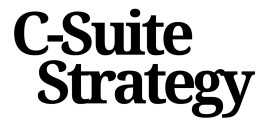
Defining Strategies and Tactics
Deciphering the Distinct Roles Within Business Operations
In the ever-evolving landscape of business, the words "strategy" and "tactics" frequently emerge within boardroom discussions. Understanding their unique roles is critical for any leader aiming to optimize both short-term gains and long-term success. "Strategy" denotes a carefully crafted plan, which guides an organization towards its long-term goals and broad objectives. It’s essentially the blueprint for achieving comprehensive success. This involves strategic planning and decision-making that aligns with the company’s vision, ensuring every subsequent move is not just random but part of a cohesive approach. On the flip side, "tactics" refer to the specific actions taken to achieve these larger strategic goals. They represent real-time maneuvers such as launching a marketing campaign or enhancing customer service efforts. Tactics are about the short term, addressing immediate demands with precision, and are often flexible, adapting to the dynamic business environment. To delve deeper into the pivotal importance of distinguishing strategy from tactics, one might explore how essential coaching literature can offer leaders insights into refining their strategic and tactical balance. This distinction helps define roles within the company, guiding everything from employees' daily actions to C-suite decisions, ensuring everyone moves in harmony towards common objectives. Distinguishing between the two is not merely academic. For C-suite leaders, this understanding lays the foundation for achieving optimal performance through the synchronization of strategy and tactics. The distinction directly influences how strategic goals are operationalized into successful results, reflecting the organization's capacity for tactical precision and strategic depth.The Importance of Strategy in Long-Term Vision
Strategic Blueprint for a Long-Term Vision
Crafting a robust strategy is the cornerstone of any successful organization, particularly for those at the helm of decision making. A good strategy serves as the north star, guiding the company through evolving market landscapes and ensuring alignment with its core mission and values. It is not merely about setting vague aspirations but about developing a comprehensive strategic plan that aligns with your organization’s overarching objectives. In the complex ecosystem of business, strategy goes beyond mere planning. It encompasses the art of defining long-term goals and mapping a roadmap to achieve them. To create a resilient business strategy, companies should engage in thorough strategic planning, which involves in-depth analysis of current market conditions, competitive landscape, and internal capabilities. A strategic plan provides clarity and direction, helping leaders prioritize resources and align efforts across various departments. It allows organizations to set clear goals and objectives that are measurable and specific, ensuring everyone works towards the same destination. This alignment is crucial for supporting tactical actions that evolve as market conditions and business needs change. Importantly, effective strategies require continuous reflection and iteration to stay relevant and impactful. Organizations must regularly assess whether their strategic initiatives are on track to meet their long-term vision. An ongoing evaluation helps refine actions to better align with evolving circumstances and capitalize on emerging opportunities. To explore more about crafting innovative strategies, explore this insightful approach, which underscores the importance of adaptive and foresighted leadership within the C-suite.Tactics: The Short-Term Actions for Achieving Strategic Goals
Short-Term Execution: The Art and Science of Tactics
Understanding the fundamental difference between strategies and tactics is crucial for any business leader, especially those in the c-suite. While strategies set the overarching long-term goals for a company, tactics are the specific actions taken to achieve these strategic objectives within a shorter time frame. Tactics play a vital role in the strategic planning process by breaking down the larger goals into manageable, actionable steps. These steps often involve real-time decision-making, allowing organizations to adapt quickly to changing market conditions and seize emerging opportunities. Moreover, the successful implementation of tactics requires clarity and precision. Each tactic should serve a specific purpose in helping the organization move closer to its ultimate goal. Tactical planning thus involves precise coordination, resource allocation, and timely execution to ensure the effectiveness of the overall strategy. For c-suite executives, honing the ability to distinguish and align their strategies and tactics can lead to a more nimble and responsive organization. To help in this endeavor, mastering the first 100 days of implementation is essential for structuring a solid foundation on which both strategic and tactical plans can succeed.Aligning Strategies and Tactics for Optimal Performance
Achieving Cohesion Between Strategies and Tactics
Building a bridge between strategic planning and tactical execution is crucial for bringing forth optimal performance within an organization. Many C-suite leaders understand that strategies define "what" and "why" an organization seeks to achieve its long-term goals, while tactics detail the "how" in realizing these objectives. However, ensuring both strategies and tactics are aligned can be challenging. There are key considerations that can help in the alignment process:- Clearly Define Strategic Goals: Clearly articulating strategic goals provides the necessary framework for developing effective tactics. A good strategy is one whose objectives are explicitly defined, ensuring all parties understand the desired long-term outcomes.
- Prioritize Communication: Regular communication between strategic planners and those executing the tactical plans is essential. Keeping open channels for feedback can help refine specific actions and make necessary real-time adjustments.
- Monitor and Adjust: Regular monitoring is essential to evaluate whether the tactics are successfully contributing to the overarching strategy. This process requires a commitment to data-driven decision making, thereby ensuring that tactical adjustments are made to align with long-term strategies.
- Integrate Flexibility Within Tactical Planning: Building flexibility into tactical plans allows for the adaptation to unexpected changes in the business environment. This means equipping teams with the agility to shift specific actions as needed to continue striving towards strategic objectives.
- Involve Multiple Perspectives: Aligning strategies with tactics benefits greatly from involving input from varied departments. This holistic approach ensures comprehensive insight into the tactical execution, aligning various facets of the business behind the same strategic vision.
Common Pitfalls in Differentiating Strategies and Tactics
Missteps in Distinguishing Strategies from Tactics
In the complex world of business strategy, one common pitfall is the confusion between strategies and tactics. This misunderstanding can lead to misaligned objectives and ineffective execution. Recognizing the nuances between these two elements is crucial for the C-suite to drive the organization toward its long-term vision.
Firstly, a strategy is a broad plan that outlines an organization's long-term goals and the path to achieve them. It involves a deep understanding of the market, competition, and internal capabilities. In contrast, tactics are the specific actions or steps taken to implement the strategy. They are more short-term and focused on immediate objectives.
Here are some common pitfalls that can occur when differentiating between strategies and tactics:
- Overemphasis on Tactics: Organizations often get caught up in the day-to-day tactical actions without a clear strategic direction. This can lead to short-term gains but may not contribute to long-term success.
- Lack of Strategic Alignment: Tactics must align with the overarching strategy to ensure that every action taken moves the company closer to its strategic goals. Misalignment can result in wasted resources and efforts.
- Failure to Adapt: A rigid strategy that doesn't allow for tactical flexibility can hinder an organization's ability to respond to real-time changes in the market. It's essential to balance strategic planning with tactical agility.
- Ignoring the Bigger Picture: Focusing solely on tactical success can lead to neglecting the broader business objectives. It's crucial to keep the long-term vision in mind while executing specific actions.
To avoid these pitfalls, C-suite leaders should engage in continuous strategic planning and regularly review how tactics align with their strategic objectives. This approach ensures that every tactical decision contributes to the broader business strategy, enabling the organization to achieve its long-term goals effectively.
Case Studies: Successful Integration of Strategies and Tactics
Real-World Examples of Strategy and Tactics in Action
Understanding the distinction between strategy and tactics is crucial for C-suite leaders aiming to drive their organizations toward success. Let's explore some real-world examples where companies have effectively integrated strategies and tactics to achieve their business objectives.
Tech Industry: Strategic Planning and Tactical Execution
In the fast-paced tech industry, strategic planning is essential for long-term growth. One leading tech company set a strategic goal to dominate the cloud computing market. Their strategy focused on innovation, customer-centric services, and expanding their global data centers. Tactically, they executed this strategy by acquiring smaller tech firms with specialized cloud technologies, investing in research and development, and launching targeted marketing campaigns. These specific actions helped them achieve their strategic goals, allowing them to capture a significant market share.
Retail Sector: Aligning Strategies with Tactical Initiatives
A major retail chain provides another example of aligning strategies with tactical initiatives. Their long-term strategy aimed to enhance customer experience and increase online sales. To achieve this, they implemented tactical actions such as optimizing their e-commerce platform, offering personalized shopping experiences, and integrating real-time inventory management. By aligning their tactics with their strategic objectives, they successfully increased customer satisfaction and boosted online sales.
Automotive Industry: Strategic and Tactical Synergy
In the automotive industry, one company exemplified strategic and tactical synergy by focusing on sustainability. Their strategic plan included reducing carbon emissions and developing electric vehicles. Tactically, they invested in renewable energy sources for manufacturing, partnered with tech companies for battery innovation, and launched eco-friendly marketing campaigns. These tactical steps supported their strategy, positioning them as a leader in sustainable automotive solutions.
These case studies illustrate the power of aligning strategies and tactics. By understanding the difference and ensuring both are in sync, organizations can achieve their long-term goals while effectively navigating short-term challenges.














